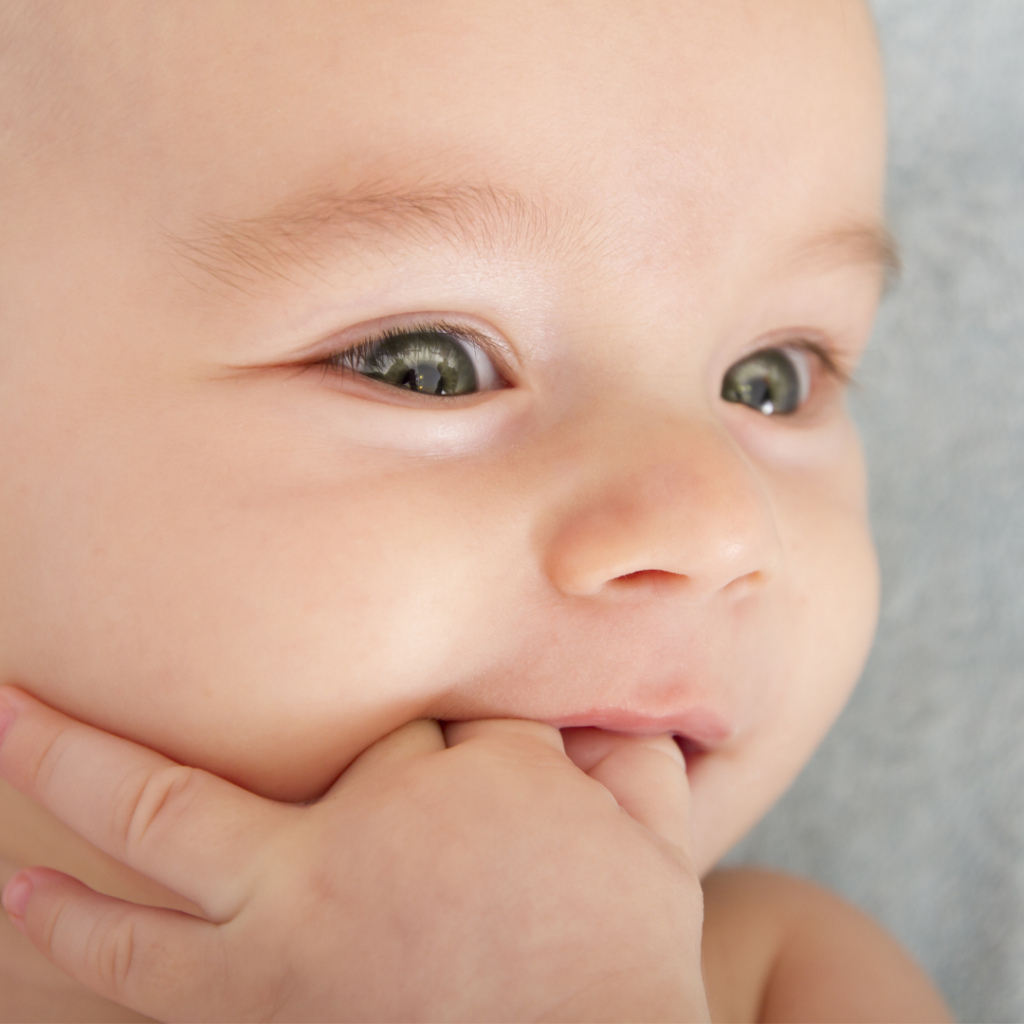Teething is a normal developmental stage, though it can still be a challenging time, not just for babies, but their parents as well. Many parents dread the start of teething symptoms after hearing reports from other parents about their experiences. However, some babies don’t seem bothered at all and don’t have any behaviour changes when they’re teething. Like most child related development, every child just seems to do their own thing, in their own time and in their own way. Teething is no exception.

What exactly is teething?
Teething is essentially the process of teeth erupting through the gums. As early as 6 weeks into a pregnancy, baby tooth buds start to form. And by the time they’re born, the baby teeth are already developed and sitting under the gums. The first teeth to appear are generally the bottom, central incisors, anytime from six months onwards. By around the age of three years, most children have 20 teeth baby teeth. From around six, the baby teeth start coming out and are replaced by the adult teeth.
There’s a large variation between individual children and the age when their teeth erupt. Symptoms of teething can start as young as 3 months of age and continue until 2 ½ – 3 years. Some babies are actually born with teeth, those this is uncommon. What’s important to know is that each tooth is valuable and needs to be cared for so that the adult teeth erupt into their correct place.
Signs and symptoms of teething
The most common symptoms of teething are drooling, gum rubbing, irritability and wanting to mouth and bite. Babies who are teething can seem less happy and need more cuddles and reassurance than usual. Sometimes it can take a while between teething symptoms starting and when a tooth is visible.
Parents can attribute other symptoms to teething. However, the general agreement among baby care experts is that signs of illness cannot be put down to teething. High-grade fever, vomiting, diarrhoea, cough, rashes and changes in sleeping aren’t related to teething. And it’s important not to overlook symptoms which may mean the child is sick.
Have your baby checked by a doctor if they seem unwell.
Best nappy rash tips
Some babies are more prone to developing a nappy rash when they’re teething. This can be due to irritation from exposure to poo and/or wee in their nappy.
If this happens, try:
- Changing your baby’s nappies more frequently. Babies’ nappies need to be changed at least six times/24 hours and more if they’re wetting and/or pooing a lot.
- Expose their nappy area to air as often as possible. Try to include some nappy free time each day.
- Cleaning their skin using cotton wool or a soft cloth soaked in warm water.
- Applying a nappy rash cream which will create a barrier between their skin and contact with poo and/or wee. Try warming the cream between your fingers before applying it to tender skin.
What can I do to help ease my baby’s teething symptoms?
Often, all that’s needed is extra cuddles and soothing. It’s unrealistic for parents to put everything else they need to do on hold and be fully available when their baby is teething. For those times when a little extra help is needed, best to speak with a doctor and/or pharmacist first about other solutions and options.
Other things to try:
- Cool washers to suck on and soft, ‘biteable’ toys, including teething rings.
- If your baby is aged older than 6 months, they may like to chew on a rusk.
- Gentle gum massage with your (clean) thumb or finger.
What not to offer your teething baby
Teething gels don’t tend to work. They often contain local anaesthetic which manufacturer’s claim can numb the gums and relieve tenderness. However, any numbing benefits stop once saliva liquifies the gel.
An amber bead necklace – there is no evidence that these work and they are a choking risk.
Caring for baby teeth
Oral care can start even before your baby has teeth. There are benefits for your baby in becoming used to having their gums cleaned with a soft, wet cloth at least once each day. During bath time can be a good time to remember.
Once your baby has even one tooth, clean it gently with a soft, moist cloth or a wet gauze. You can use a soft, small headed toothbrush at least once per day to remove any food. Once your baby is 18 months of age, start using a children’s toothpaste which contains fluoride.
Avoid kissing your baby on the mouth, ‘tasting’ their food before offering it and blowing on their food to cool it down. These are all ways that bacteria which cause tooth decay can be passed from parent to child.
Offer your baby sips of water from a cup once they’re having solid foods. Check with your local council to see if your town water is fluoridated.
Make a dental appointment for your baby once their first tooth appears or they reach 12 months – whichever comes first. And take them with you for your regular dental checks so they learn that oral care is important for overall good health.
Written for Sudocrem by Jane Barry, Midwife and Child Health Nurse, June 2023.

